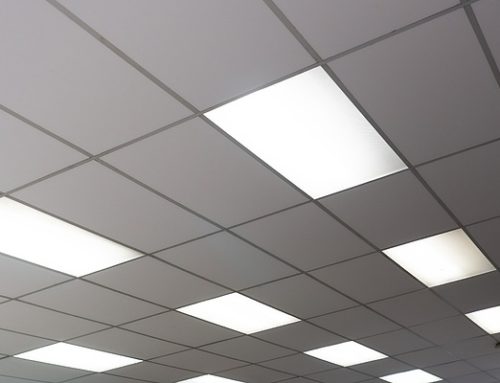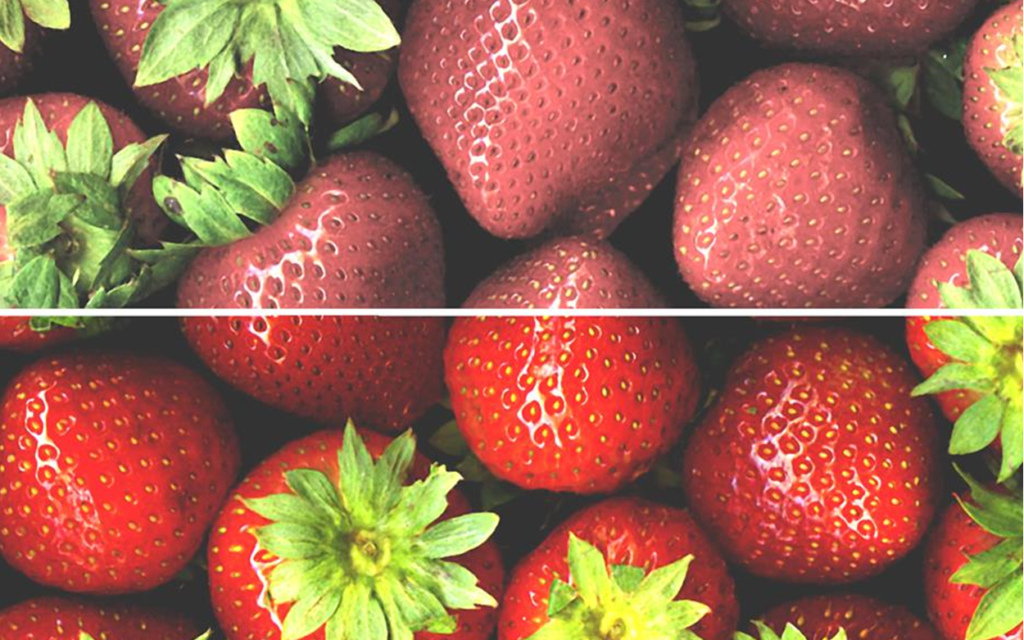
Have you ever noticed that objects look different under artificial lighting than they do under natural lighting? This effect on our perception can cause us to make hasty judgments, like “eating with our eyes,” or cause us to make mistakes, like matching black socks with navy ones. Whether we appreciate it or not, the traits of a light source can have a significant effect on our daily lives.
Consider when you go shopping for light bulbs; what are some products facts you typically look for on the lighting label? The brightness and lumens output, the estimated annual energy cost, the light’s color temperature (either warm or cool), and of course the bulb’s life expectancy. Now it’s time to add another trait to the list: the bulb’s CRI.
What is CRI?
CRI stands for color rendering index. CRI measures and compares (on a scale of 0 to 100) the ability of a light source to accurately reproduce the color of an object under artificial light. An LED bulb that perfectly replicates the sun has a CRI of 100, allowing objects to appear clearly, and naturally, and colors to appear truer across a wide spectrum. Surprisingly, halogen and incandescent bulbs, despite their awful energy efficiency, produce a full, natural and excellent light spectrum with a CRI of 100.
Understanding the CRI value of a light bulb is easy: the higher the bulb’s CRI, the more vibrant the colors will appear. The lower the CRI, the duller the colors will appear. A light bulb with a CRI rating of 80 or more is good for most applications, and a bulb with a CRI of 90 or more is considered excellent. Bulbs with a CRI of 80 and below are generally considered poor and cause colors to appear washed out and harder to differentiate.
Be aware that a light’s color rending index is a separate measurement from its color temperature (or “CCT”—correlated color temperature—in fluorescent lights and LEDs). Color temperature is measured in degrees of Kelvin (K) on a scale from 1,000 to 10,000.
How Color Works
Natural daylight is the combination of all the colors in the visible light spectrum. The color of sunlight itself is white, but the color of an object under the sun is determined by the color reflected by the object.
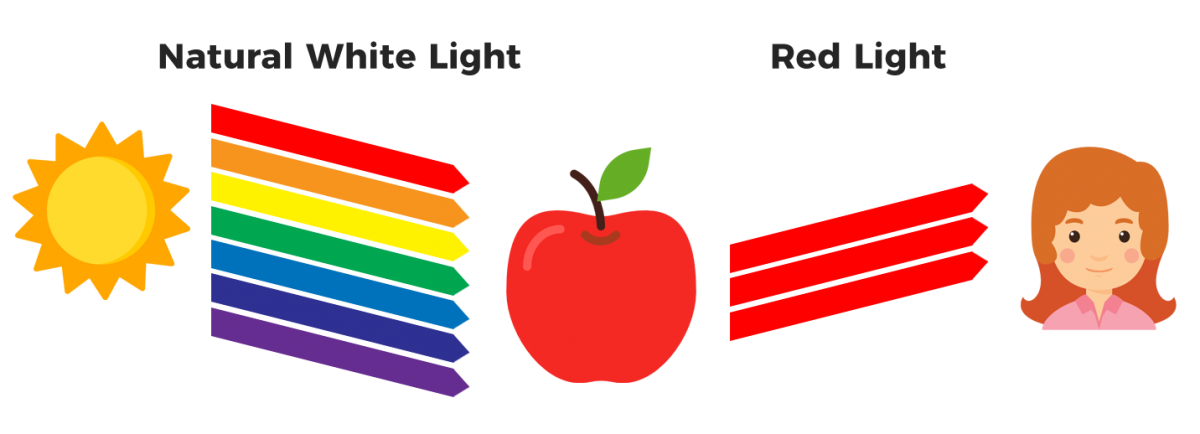
For example, an apple appears red because it absorbs all the colors of the visible spectrum except for red, which it reflects. When using an artificial light source, such as an LED lamp, we’re attempting to reproduce the colors of natural daylight in such a way that objects appear the same as they would under natural light. In some cases, the reproduced color will appear similar, and other times it appears quite different. The similarity of the color reproduced compared to the color under natural light is what CRI measures.
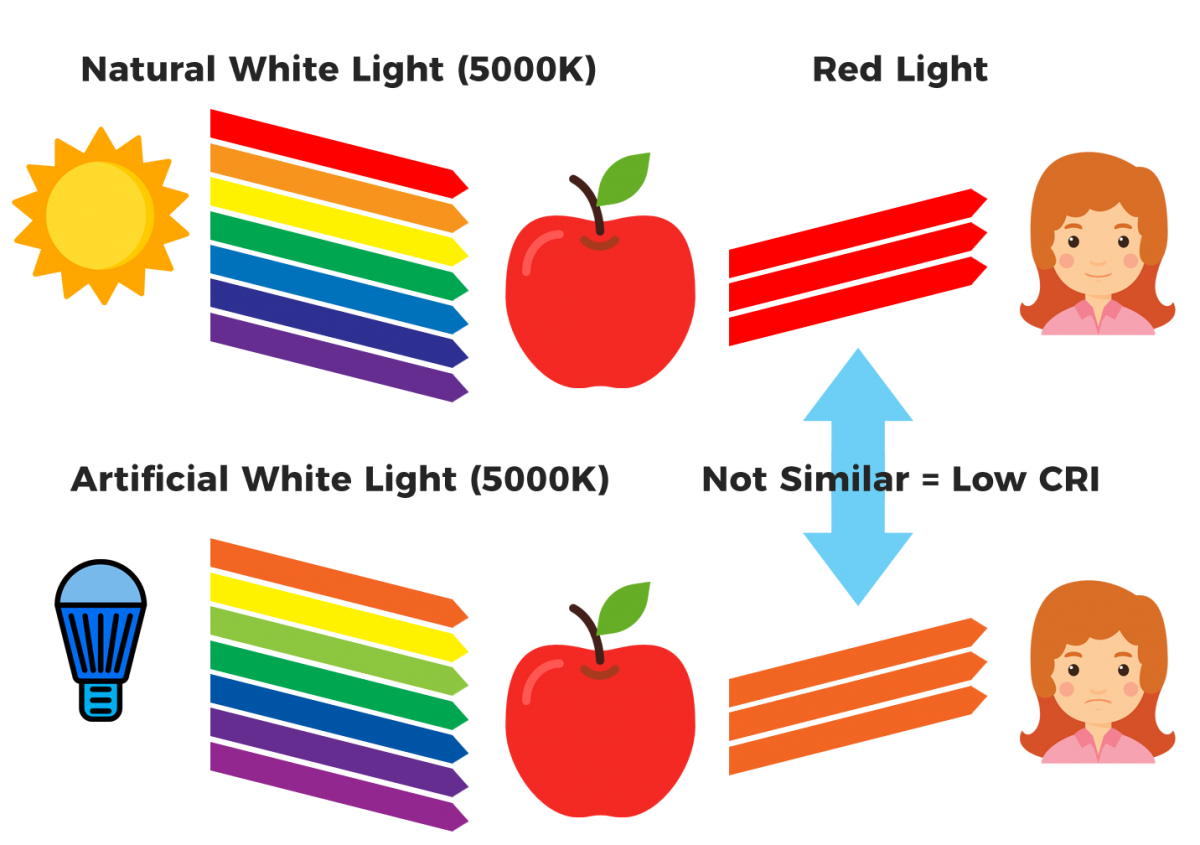
As illustrated in the example above, our artificial light source (an LED lamp with 5000K CCT) does not produce the same redness in an apple as natural daylight (also 5000K CCT). This is due to the LED lamp having a different spectral composition than natural daylight, even though both light sources are the same 5000K white color. In particular, the LED lamp is lacking in red, so when the artificial light bounces off the apple, there is no red light to reflect.
As a result, the apple no longer has the same vibrant red appearance it had under natural daylight. CRI attempts to characterize this phenomenon by measuring the general accuracy of a variety of objects’ colors under a light source.
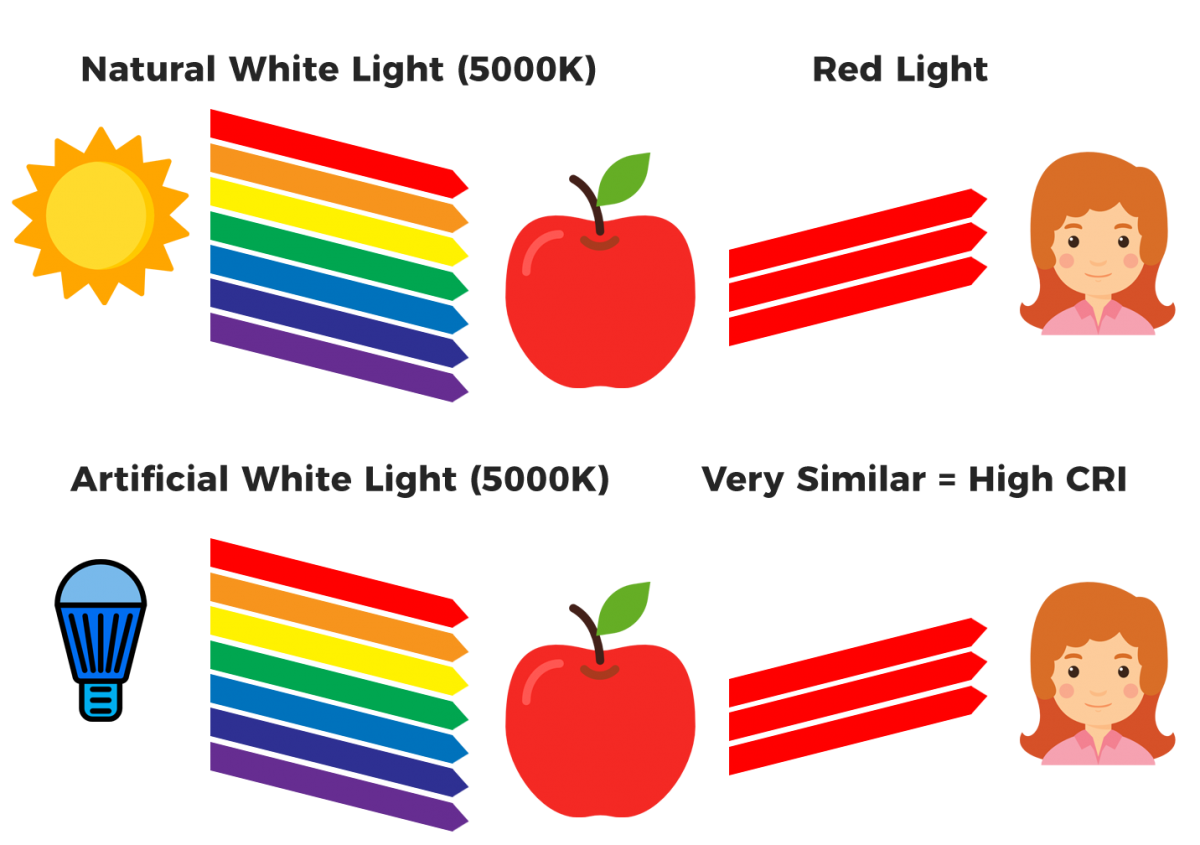
Industries Where CRI Is Important
As previously mentioned, for the majority of indoor and commercial applications, the general baseline for acceptable color rending is 80 CRI and above. In industries where color appearance can have an effect on the work completed, or can contribute to improve aesthetics, 90 CRI and above is recommended.
Organizations where 90 CRI may be needed for professional reasons include hospitals, dentist offices, printing facilities, textile factories or paint shops. Areas where improved aesthetics could be important include high-end hotels, retail and grocery stores, residences, and photography studios.
CRI might not be important if you’re lighting a parking ramp, warehouse facility, or in an application where you don’t particularly care if the objects you’re viewing are in B&W or in color.
Questions About Lighting? Give EPL a Call
The team at Energy Performance Lighting understands the color rendering index and can answer any questions to help you make the best decision for your lighting needs. Give us a call at 608-661-5555 or send us a message – we’re more than happy to help!

